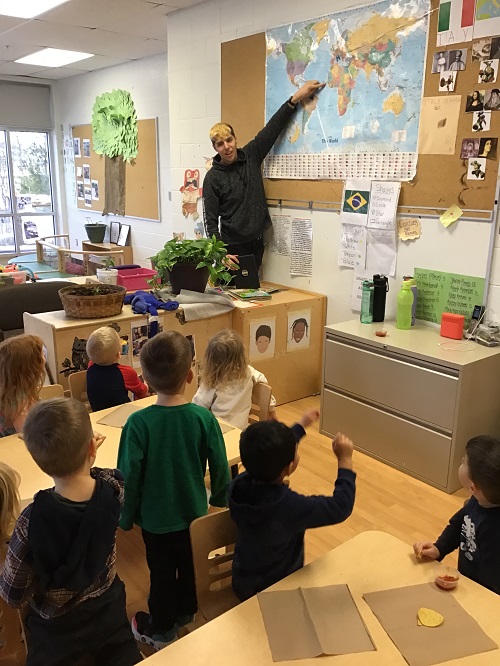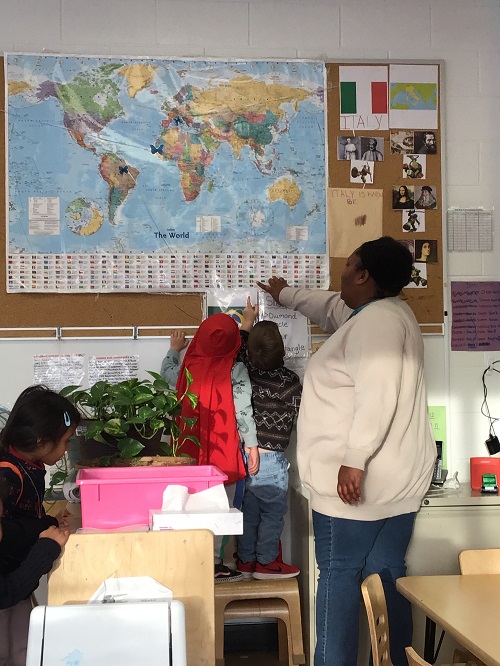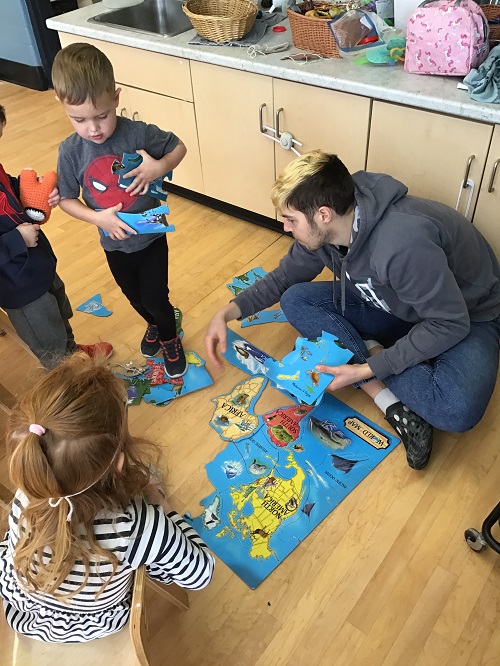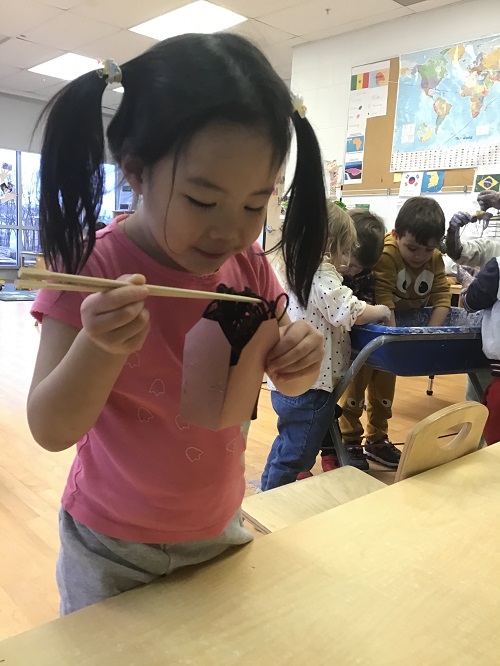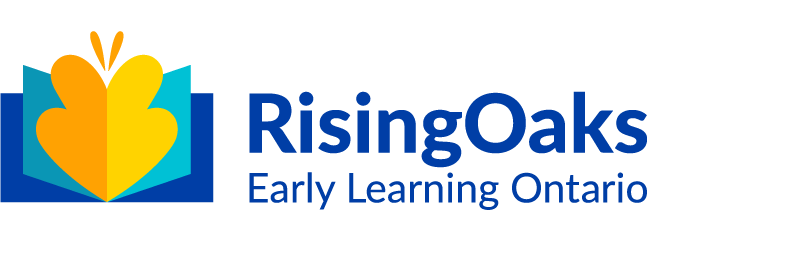As I sat down to write this learning story, I thought back to when it all started. It was Remembrance Day of 2023 and Max asked me what a memorial is. I explained to him that World War 2 happened in Europe, and not everyone could go to Europe, so they put up a memorial for people who couldn't fly that far.
This sparked our journey, which started organically with the children paying attention when we talked about Remembrance Day. They would go up to the map and try to find Canada, and were excited when they found it. Then we introduced a book with all the flags of the world, which was more eye-level for them and allowed them to ask their educators about the names of different countries.
With the help of the children, we randomly chose a country and through provocation and scaffolding, it evolved into much more. The first country we chose was Brazil, and because we were learning shapes, we brought that into the learning of Brazil through the Brazilian flag. We thought that a month timeline for each country may be helpful, so after Brazil, we introduced Italy because Joey's favourite time of year is Christmas and we wanted to know where it first started. We learned that Christmas started in Rome, Italy, so that was our next country. It also allowed for letter recognition.
Because we were learning so many different things in so many different countries, and we wanted to be more inclusive in the classroom, we decided to use the people that we’re surrounded with instead of putting up different cultures of peoples. Simone brought the idea to the team, and we engaged with families to write bios and read them to the children while also adding their flags that their families identify with as a part of their culture. This allowed us to tie back to the children’s interests of learning about different flags and countries.
In January, we went to Senegal, which was one of the most random and unknown countries to us as educators. Through provocation and scaffolding, it is one of the countries that the children remember the most because we learned that Senegal has a pink lake called Rose Lake, which is pink because it has so much salt in it. It also allowed for a sensory activity where the pink colour allowed for memory recall and conversations about where else you can find a pink lake. We also learned to identify different flags, even though they look similar.
Through this learning, we have seen growth in identifying different countries around the world. We have multiple books in the classroom, and children sit together to identify different flags and ask their educators the names of different countries, which has allowed for vocabulary growth and exploration of the world around them. It has also allowed for language development, knowledge sharing, and opening up conversations that allow the children to learn about each other and their families in a safe environment.
in February we have allowed for more of a teacher lead portion of learning about the different countries as we will be exploring South Korea for lunar new year so that will be our country for February. But also, we are introducing different people of colour and food for Black History Month who are not only Canadian, but also identify to a different language or cultures.
As we continue to explore our world map and follow the children's interest while also continuing to scaffold and add provocations, we will use technology, books and other resources. We will also be introducing the children to Kids World Cultures app that hopefully will spark you conversations and new explorations.
